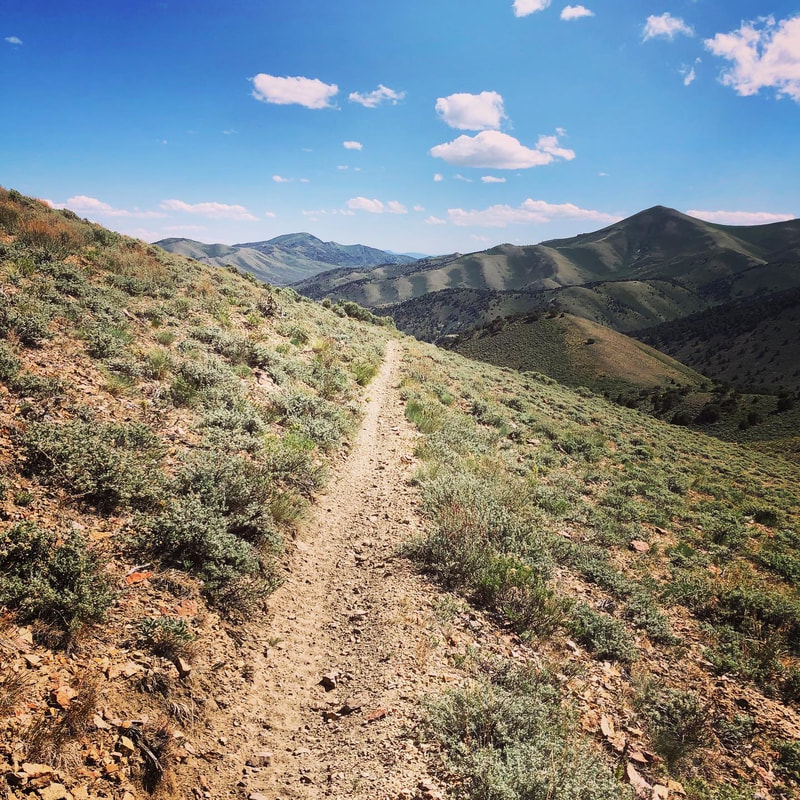|
There are a lot of opinions surrounding the requirement of OHV registration stickers in the first place. Then some really strong opinions came to the surface when SSORA introduced it's proposal to require OHV registration for plated bikes using public trail systems. We did notice, however, that some of those opinions were based on some misinformation and incorrect assumptions. To follow up, we wanted to provide some facts to set the record straight. What is reciprocity?
Reciprocity is the term used when one state honors another state’s OHV registration sticker for a visitor to ride on public lands without obtaining a registration sticker from the state you are visiting. It is important to understand that reciprocity is NOT mutually exclusive. Just because Nevada grants reciprocity to other states does not mean that other states grant reciprocity to Nevada. Here’s the scoop on where reciprocity currently stands: Nevada grants reciprocity to all other states. California is the only immediately neighboring state which grants reciprocity to Nevada (for now – subject, and anticipated, to change at any time). This means that if you want to take a trip and ride in the public lands of Oregon, Utah, Arizona, Colorado… you need to obtain a local OHV registration sticker from that state (which funds their local OHV program). However, a rider from any of those states may ride in Nevada without obtaining a Nevada OHV registration sticker. What’s the difference between registering a bike for street use vs. OHV use? Besides the distinction of being road-legal or not, the important difference is where the money goes. Registration fees for cars and plated motorcycles go towards state road construction and the DMV operating budget. OHV registration “sticker” fees go exclusively to a state OHV fund. So even though OHV registration is currently being processed through the DMV, the OHV registration fees are not allocated the same as regular registration fees. FYI: California’s OHV is funded by both OHV registration fees and a portion of the state’s gas tax (which Nevada doesn’t have). How are Nevada OHV funds spent? OHV Funds (aka: registration sticker fees) are disbursed in annual grants awarded by the Nevada OHV Commission for OHV-related projects. The scope of these qualifying projects in Nevada are defined by NRS 490.069(2)(c) as follows:
Who gets these grants? In 2019, there were 29 grant applicants competing for a little over $1M in the Nevada OHV fund for the 2020 year. 18 of those grants were funded (some only partially). Obviously, you have to apply for a grant to get a grant. Had Reno Area Dirtriders not applied for a grant for the Peavine maze project, we wouldn’t have received it and more funding would have been allocated to other applicants.** You can see how interest organizations like Friends of Nevada Wildnerness can exploit #6 (as it is currently written) as a loophole to close riding areas in order to “restore damage.”** Then of course, law enforcement’s entitlement to receive grants for OHV sticker enforcement is codified in #9. In our newbie experience, it was not rocket surgery to obtain and administer this grant. And we hope to inspire other off-road users to organize themselves and take the initiative to acquire funding for their own projects. At the end of the day, the ONLY proactive way to ensure that money actually goes into the trails is for OHV users to step up, organize a project they want to see and go for it. No one is going to knock on your door and ask you what work they can do for your trails. **FYI: Friends of Nevada Wilderness’s 2019 grant application for $30,000 (roughly the same size as RAD’s grant) for decommissioning a trail was not funded. Would it have been funded if RAD didn’t apply? How does the Nevada OHV Commission decide who gets grants? NAC 490.1393 – 141 establishes a Grant Scoring Committee. This is a technical advisory committee made up of people with OHV interests, including personnel from the BLM and Forest Service, the Recreational Trails Program, law enforcement and the department of wildlife. The OHV Commission then ranks the applications from highest to lowest by averaging the individual scores of each application. As of 2019, the OHV Commission has listed the scoring priorities in this order:
Ideally, a project proposal will check multiple boxes of the above to receive a higher score. RAD’s Peavine Maze Maintenance application scored second overall when taking all of the above into consideration. **It is important to note that while law enforcement is listed as the first priority, the OHV Commission did deny funding to applications from law enforcement offices in Las Vegas Boulder City and Nye County, and only gave partial funding to Humboldt County Sheriff’s Office. Looking at the order of the 18 grants funded for the 2020 year, all of the higher ranking applications which were prioritized for funding were those applications directly related to trail maintenance, mapping and education/outreach. We hope this provides a better understanding and clears up any myths you might have heard. Write to us at [email protected] or start a conversation about this on the Facebook page - let's hear your thoughts and opinions!
2 Comments
When you register for an event, it's natural to wonder where your money goes. Registration fees typically cover a variety of essential costs, such as venue rental, event materials, guest speakers, and even refreshments. These funds help ensure a smooth and successful event experience for everyone involved. Some events also allocate a portion of the registration fees to charitable causes or future programs, making your contribution even more impactful. If you're curious about the specifics, don't hesitate to ask the organizers—transparency is key!
Reply
Leave a Reply. |
Copyright 2019-2022 All rights reserved. All images are used with permission. Site powered by Weebly. Managed by Bluehost


 RSS Feed
RSS Feed